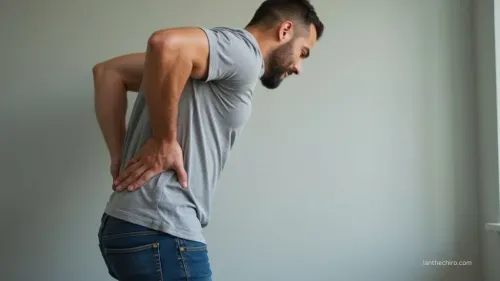Understanding Soft Tissue Injuries: Sprain vs Strain
Muscle strains, ligament sprains, and various soft tissue injuries are common in everyday life. Whether it's a sprained ankle from a sports game or repetitive strain injury from your daily work, these ailments affect many of us. In Malay, the term "strain" translates as "tegang," shedding light on these issues within the cultural context. In this blog, we'll provide a guide to understanding and managing these injuries.
Strains and Sprains: What's the Difference?
1. Sprain:
A sprain involves the stretching or tearing of ligaments (the bands connecting two bones). It often occurs in wrists, ankles, or knees. An example of a sprain is twisting your ankle while playing football.
2. Strain:
A strain involves the stretching or tearing of muscles or tendons (the fibrous cords that connect muscle to bone). Pulled muscles, muscle tears, or muscle sprains fall under this category. An example of a strain is overstretching your hamstring while running.
Below is a comparison table to highlight the key differences between the two:
How Chiropractic Care Can Help

At Ian The Chiro, we recognise that each injury is unique. Our non-invasive techniques can assist in:
Diagnosing the Injury: Identifying whether it's a strain or sprain, and understanding the severity.
Treatment Plans: Creating personalised treatment plans that may include adjustments, exercises, and lifestyle advice.
Promoting Healing: Enhancing blood flow, reducing inflammation, and supporting the body's natural healing process.
Prevention: A Proactive Approach
While complete prevention of strains and sprains may not always be possible, especially in active lifestyles, reducing the risk of injuries is within our control. Focusing on injury preparation rather than mere prevention offers a more realistic and proactive approach. Here's how you can reduce the risk:
1. Warm Up Properly:
Proper warm-up prepares your muscles and joints for the activity ahead, reducing the risk of overstretching or sudden strain.
2. Use Correct Equipment and Techniques:
Ensuring you wear the right shoes and follow proper techniques in sports or daily activities minimises unnecessary stress on your muscles and ligaments.
3. Routine Chiropractic Visits:
Routine visits to your local chiropractor can assist in maintaining alignment, flexibility, and strength, preparing your body to handle physical stress better.
4. Understand Your Body's Limits:
Listen to your body and understand when to push and when to rest. This self-awareness is vital in injury preparation and long-term health management.
How Do You Know if It's a Sprain or Strain?

Understanding the difference between a sprain and a strain starts with recognising the symptoms and affected areas.
Sprain Symptoms: Pain, swelling, bruising, and limited ability to move the joint (acute).
Strain Symptoms: Pain, swelling, muscle spasms, and limited ability to move the affected muscle.
The affected tissues often point out the nature of the injury. If ligaments are involved, it's a sprain; if muscles or tendons are affected, it's a strain.
Is a Strain Worse Than a Sprain?
This depends on the injury's severity and location. A mild sprain might recover faster than a severe muscle strain. However, a torn ligament can sometimes be more challenging than a pulled muscle. Each injury requires specific attention, and neither should be taken lightly.
Does a Strain Take Longer to Heal Than a Sprain?
Strains generally recover faster if they are minor, as muscles have a rich blood supply aiding recovery. However, severe muscle or tendon tears may take longer. Sprains, especially in ligaments with limited blood flow, can be more stubborn.
On average:
Mild to Moderate Strains: Take 2-3 weeks to heal.
Severe Strains or Sprains: Can take several months.
How Long Does a Strain Take to Heal?
The healing time for a strain depends on the severity:
Mild Strain: 2-3 weeks.
Moderate Strain: 3-6 weeks.
Severe Muscle Tear: Months and may require medical intervention.
How Do You Treat a Strain?
 Treatment for strains, and indeed all soft tissue injuries, follows a principle known as R.I.C.E:
Treatment for strains, and indeed all soft tissue injuries, follows a principle known as R.I.C.E:
Rest: Allow the affected area to recover.
Ice: Apply cold packs to reduce swelling.
Compression: Use bandages to minimise inflammation.
Elevation: Raise the injured part to decrease swelling.
Furthermore, engaging in gentle exercises and physiotherapy can be beneficial, along with routine visits to healthcare professionals like chiropractors who specialise in non-invasive techniques.
Conclusion
Understanding strains and sprains, recognising their differences, and knowing how to manage them is essential for anyone proactive about their health. At Ian The Chiro, we aim to not only alleviate chronic pain but also empower our patients to take control of their well-being. With our affordable and personalised approach, we offer more than a remedy for these common ailments. If you've experienced a strain, sprain, torn ligament, or any muscular injury, we're here to help. Feel free to connect with us.
Schedule a visit with Ian The Chiro today, and take the first step towards healing and well-being.













